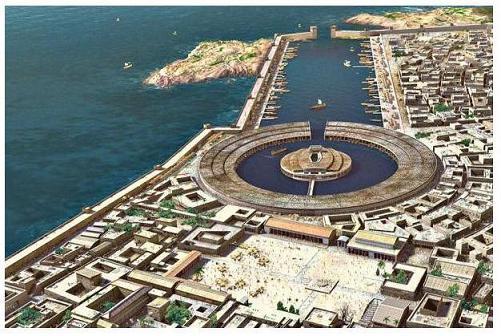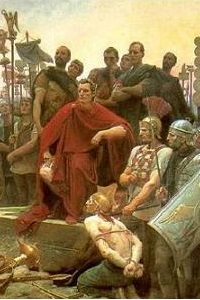The Mid-Republic and the Punic Wars
Updated on: 1 May 2023Reading time: 5 minutes
In the third century BC, Rome had control of the entire Italian peninsula and was a significant naval power with trade in the Mediterranean Sea. However, Carthage was another major power in the region. In 264 BC, the first Punic War began when Messana (today's Messina) requested help from Carthage. But when Messana became fed up with Carthage's presence, it asked Rome to expel the Carthaginians from its city. Rome had an interest in going to war against the Carthaginians as it didn't want them close to its southern Italian territory. Helping Messana was also an opportunity to have a strategic presence in Sicily. Although Rome lacked experience in fighting battles at sea, it managed to defeat Carthage after 20 years of fighting in the first Punic War, and a peace treaty was signed demanding war reparations.
Second Punic War (218 to 201 BC)
The Second Punic War (218 to 201 BC) was fought over these war reparations. Hannibal marched through Hispania, crossed the Alps, and invaded Italy, causing panic in towns and villages. General Fabius Maximus delayed Hannibal's advances in Italy by fighting small battles, which eventually weakened Hannibal's army. Hannibal was unable to attack the city of Rome. These battles left us what we call today the "Fabian strategy."These battles lasted more than 16 years, and Hannibal's army caused significant damage by destroying a lot of Rome's agriculture and supplies. When supplies were running low, endangering the livelihood of Romans, Rome decided it was time to invade Carthage. The Roman forces were headed by Scipio, who had actually fought and defeated the Carthaginians in the first Punic War. The Second Punic War ended at the Battle of Zama in the autumn of 202 BC, and Rome had conquered Hispania and Syracuse, gaining complete control over Sicily.

|
Third Punic War (149– 146 BC)
After paying war reparations for 50 years, Carthage felt it had paid them in full and was no longer a threat. Rome was focused on other kingdoms in Greece and revolts breaking out in Hispania. However, the Roman Senate saw things quite differently. In 149 BC, Numidia, a Berber-Libyan kingdom (located in today's Algeria and a small part of western Tunisia), attacked Carthage, and Carthage asked Rome for help. The ambassadors evaluated that Carthage had a good chance of winning and becoming a power in the Mediterranean again.The decision was made to destroy Carthage, and Roman ambassador Marcus Porcius Cato famously said, "furthermore, I think that Carthage should be destroyed", in Latin: ceterum censeo Carthaginem esse delendam. In 149 BC, Rome declared war on Carthage, stating that the Carthaginians had attacked Numidia without Rome's approval. Eventually, General Scipio Aemilianus destroyed the city razing its walls to the ground, and all the inhabitants who remained alive were captured and sold as slaves. With the end of the Third Punic War, Rome had control of large North African territories.
Conquest of Greek kingdoms
Rome also focused on conquering the Greek kingdoms. The Seleucid Empire, a Greek empire stretching from the Middle East to north-western India, was one example. Rome stopped the Seleucid Empire's expansion into Anatolia in brutal battles in the 2nd century BC. Rome eventually conquered the Greek territories in modern-day Turkey and the Middle East. The conquest of these territories also had another effect: Rome adopted some of the Greek customs, and Roman culture became more refined and sophisticated. Rome became the sole power in the Mediterranean.SOURCES
- The Wars with Carthage (Chris Scarre, The Penguin Historical Atlas of Ancient Rome, 1995)
- The Punic Wars(Goldsworthy, Cassell, 2001)
- The History of Ancient Rome (G. Fagan, Teaching Company, 1999)

